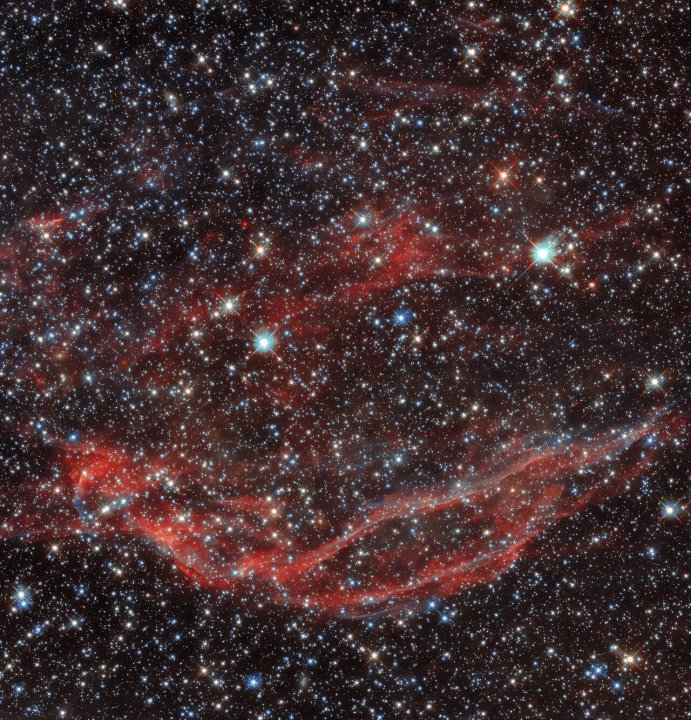Supernovas might spell the end for the star they happen to, but they aren’t only destructive phenomena. When a star approaches the end of its life and runs out of fuel, it explodes in an enormous outpouring of energy, leaving behind a small, dense core that becomes a black hole or a neutron star. This explosion, though destructive on an epic scale, can also leave behind a beautiful remnant created by the explosion’s shock wave.
A image recently released by the Hubble Space Telescope team shows one such supernova remnant, called DEM L249. Captured by Hubble’s Wide Field Camera 3 instrument and located in the constellation of Mensa, this delicate structure is formed from dust and gas ejected outward from the star’s location by the force of the blast.

“This object — known as DEM L249 — is thought to have been created by a Type 1a supernova during the death throes of a white dwarf,” the Hubble scientists write. “While white dwarfs are usually stable, they can slowly accrue matter if they are part of a binary star system. This accretion of matter continues until the white dwarf reaches a critical mass and undergoes a catastrophic supernova explosion, ejecting a vast amount of material into space in the process.”
This remnant is located around 160,000 light-years from Earth in a small satellite galaxy of the Milky Way called the Large Magellanic Cloud (LMC). Researchers use Hubble to look to the LMC to understand more about star evolution, as it is located relatively nearby and is not obscured by too much dust.
“The LMC is an ideal natural laboratory where astronomers can study the births, lives, and deaths of stars, as this region is nearby, oriented towards Earth, and contains relatively little light-absorbing interstellar dust,” according to the Hubble team. “The data in this image were gathered by Hubble’s Wide Field Camera 3 instrument, and were obtained during a systematic search of the LMC for the surviving companions of white dwarf stars which have gone supernova.”



